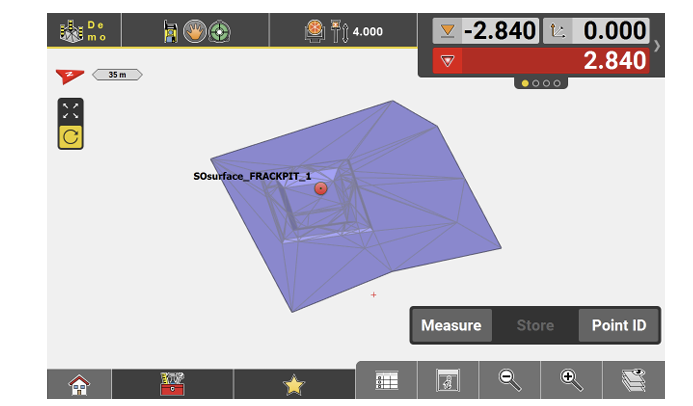Define a Pond Fitting in an Existing Surface 8.7.6
General description
 * Values to enter during Dimensioning process. For pond inner edge and pond outer edge only the height is entered.
* Values to enter during Dimensioning process. For pond inner edge and pond outer edge only the height is entered.
Given:
• Instrument is connected and set up.
• Surface file available in active job.
• Known dimensions of the pond to be established.
➜ Note that main workflow refers to GNSS. For Total Station press Measure, then Store.
Define a Pond fitting in an existing surface step-by-step
- Open the Surfaces & Volumes app.

- Tap the displayed surface to select it.
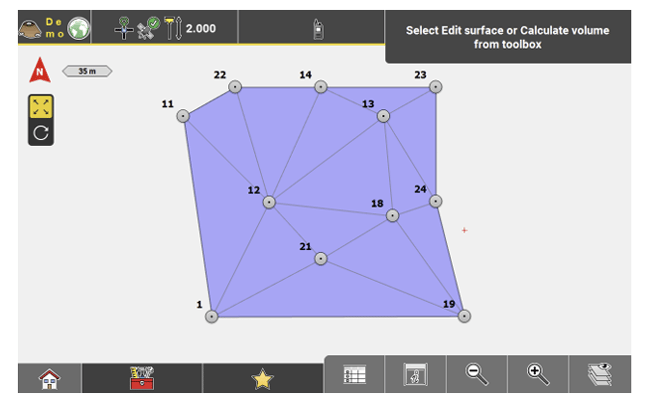
- Select Calculate Pit/Pond from the Toolbox.
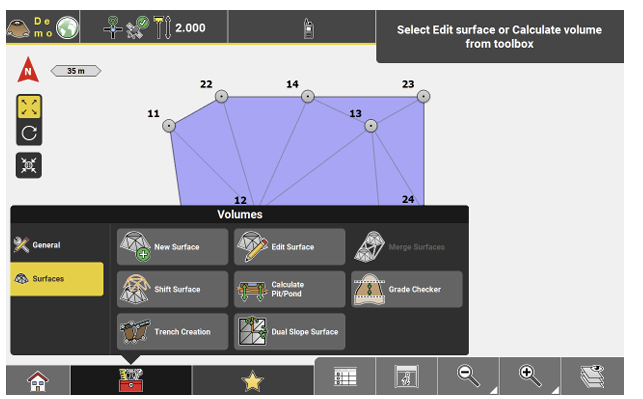
➜ To display different surfaces use Map view manager.
-
 Select the pattern according to your needs. During first-time use, only the Default Pattern is available.
Select the pattern according to your needs. During first-time use, only the Default Pattern is available. -
 Now dimension all necessary elements, as shown in the illustration before:
Now dimension all necessary elements, as shown in the illustration before:
• Define length and width of the pond floor. Enter a relative height value for each of the four floor corner points separately. These heights can vary.
• Enter offset value to the floor lines at . This value is the distance from the floor lines to the pond inner edge.
. This value is the distance from the floor lines to the pond inner edge.
• Enter a relative height value for the pond inner or pond outer edge. The same height is applied to all eight corner points.
• Define the berm width at .
.
• Define the outer berm slope angle at .
. -

After defining all these values, you can save this pond as a user defined pattern. Tap Save, enter a name and tap . In this case, the software automatically proceeds to the next step.
. In this case, the software automatically proceeds to the next step.
Otherwise tap the next Wizard step to proceed.
to proceed. - Define where to place the pattern at. Pick the line that is used as insertion line.
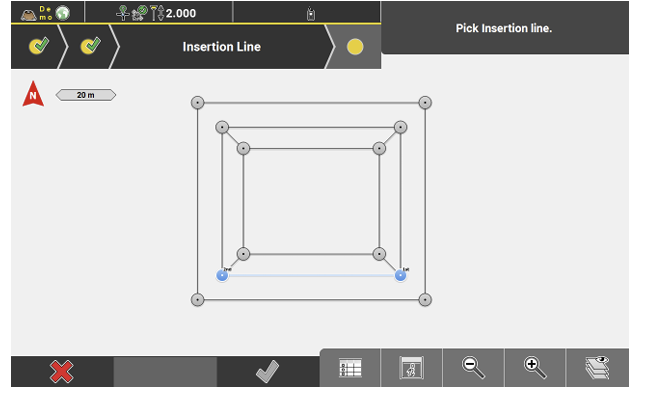
- Proceed to the next step to apply the pattern:
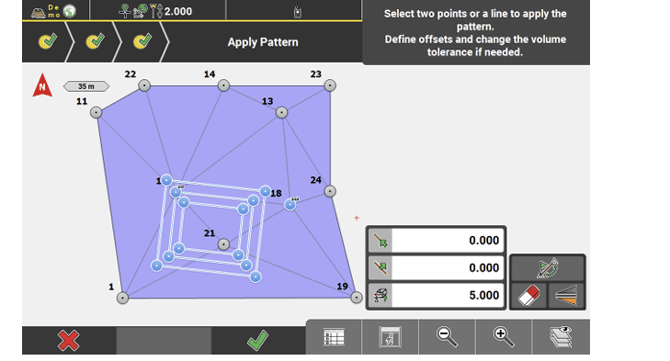
• Select two points or a line as the reference line. If needed, use to switch the start point and end point of the active line.
to switch the start point and end point of the active line.
• Use to flip the pattern across the reference line.
to flip the pattern across the reference line.
• Enter an offset value along the line at and offset value to
and offset value to
the line at , if needed.
, if needed.
• Define the volume calculation tolerance at . The smaller this value is, the longer the calculation needs.
. The smaller this value is, the longer the calculation needs.
• When finished, tap to accept.
to accept. - Enter a name for the surface in the next screen, and tap
 to save. Then enter a name for the pond geometry and tap
to save. Then enter a name for the pond geometry and tap  to save.
to save. - In the final screen, the newly created pond is shown applied to the selected surface.
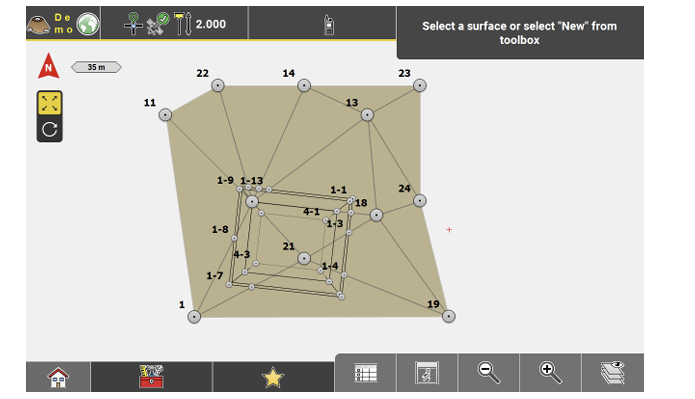
➜ The newly created surface, including the pond, can now be used for staking out, but the data can also be exported for machine use.
➜ Example of the surface with pond, used in Cut & Fill.